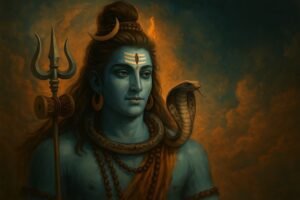Table of Contents
TogglePadmasambhava was a key figure in the development of Buddhism in Tibet, and considered as the Second Buddha. As an Indian tantric master he otherwise referred to as Guru Rinpoche. He established the first Buddhist monastery in Tibet. The name Padmasambhava which means “Lotus- Born” in Tibet and Sanskrit, which indicates his birth from a lotus flower in a lake in Oddiyana. Moreover, he is regarded as the instrumental figure in establishing Vajrayana Buddhism in Tibet.
Why He Came to Tibet
King Trisong Detsen, a staunch enthusiast of Buddhism, invited Padmasambhava to Tibet in the 8th century with his intention of propagating Buddhism and helping to build the first Buddhist monastery at “Samye.” Padmasambhava or Guru Rinpoche holds a dominant role in spreading Vajrayana Buddhism in Tibet through his tantric practices and teachings with the construction of First Buddhist Monastery, Samye. It becomes one of the main centers for learning Buddhists practices.
What He Did
He introduced Vajrayana Buddhism, other known as Mantrayana, Tantrayana or Tantric Buddhism to the people of Tibet. Vajrayana Buddhism is associated within Mahayana Buddhism, one of the main branches of Buddhism developed by Gautama Buddha, a religious teacher and spiritual leader generally known as “Buddha.” It highlights the Mahayana sutras and gives attention on the Bodhisattva path. In another way, Vajrayana Buddhism is a sub set of Mahayana Buddhism, using numerous tantric practices, that vajrayanist considered to attain Buddhahood. Comparing to Mahayana, and Hinayana Buddhism, another branch of Buddhism, highlights individual enlightenment and self discipline with attention on the original teachings of Buddha, Vajrayana Buddhism encompasses distinct tantric practices and indicates rapid enlightenment.
Vajrayana Buddhism highlights the esoteric practice and rituals encompass mantras, mudras, and deity etc… that mainly centering on to rapid spiritual awakening. According to Vajrayana Buddhism teachings are passed from Guru to the students and believe that it is possible for people to achieve enlightenment in a single lifetime.
In Vajrayana Buddhism his teachings are called “Termas” or hidden treasure text which includes oral transmissions and hidden treasures which are the spiritual treasure hidden by Padmasambhava in the mind of his disciples. Establishing Vajrayana Buddhism to the Tibetan people, Padmasambhava introduced his practices of tantra. Through these practices of his tantric rituals, he increased the life of kings. Various biographies discuss the stories of Padmasambhava or Guru Rinpoche in Tibet. Due to his role in building the “Samye “monastery he is considered as the founder of “Nyingma School” of Tibetan Buddhism, the oldest four major school of Tibetan Buddhism. Nyingma tradition encompasses the major elements of Tibetan Buddhism. Including its teachings called “Nine Yanas”, or the vehicles to liberation, another one which is Great Perfection, considered as highest Buddhist teachings. He is actively fought against the negative forces that stopped Buddhism.
How He Looks in Art
Padmasambhava or Guru Rinpoche is looks like honest and smiling person. He eyes are opened widely due to the unwavering nature. He is looks youthful appearance and seated with his two feet in the imperial posture. He wears a lotus hat with magic tools and a Vajra undergarment. Moreover, he holds a five- pronged Vajra on the right hand and skull- cup brimming with nector on the left hand.
Padmasambhava or Guru Rinpoche has eight forms that manifest the different sides of him. These are the following
- Shakya Sengo – Lion of the Shakya clan
- Pema Gyalpo – Lotus king
- Nyima Odzer – Rays of the sun
- Dorje Drolo- Vajra Comforter of Beings
- Sengo Dradog – Roaring Loin
- Lodan Chokse – Highest Aspirations
- Pema Jungne – Indicates the initiation of him into Mahayana teachings break into as Bodhisattva path.
- Urgyan Dorje Chang – Vajra Bearer from Urgyan
His Mantra
Padmasambhava, a well-known scholar, and meditator used different mantras and rituals that manifest his rich and different nature. One of his primary mantra is “Om Ah Hum Vajra Guru Padma Siddhi Hum” regarded as a powerful mantra knows as Vajra Guru Mantra. The “Oh Am Hung” is the three symbols of Vajra such as body, speech, and mind.
Padmasambhava Vajra Guru Mantra provides numerous benefits. Below are the some of them
- It is believed that reciting Vajra Guru Mantra refines the negative karma from past actions. Clearing this negative karma, can helps to the spiritual growth and path to enlightenment.
- Repeating the mantra can provide peace and calm.
- Vajra Guru Mantra serves like a powerful weapon that protects one from negative influences and creates a positive environment.
- Chanting the mantra helps to deep your mediation practice which helps to the concentration and increasing the quality of mindfulness.
- It is believed that chanting this mantra helps to enhance the devotion and connection to Padmasambhava.
- The vibrations of mantra can bring a positive effect on the mind and body, contributing over all well-being.
- It acts as a powerful tool for attaining spiritual insights and realization.
Conclusion
In short, Padmasambhava is an influential figure who developed Buddhism in Tibet and introduced Vajrayana Buddhism to the people of Tibet. With the construction of the First Buddhist Monastery, he spread his ideas to the people and it becomes the major center for leaning Buddhist practices. His diverse nature of tantric practices and rituals provide numerous benefits for the people and helps to gain deep spiritual insights and realization.
Also Read: Maitreya Bodhisattva -The Buddha of the future
Also Read: Happy Buddha Purnima / Buddha Jayanti Wishes, Quotes 2025-Special Day for Peace and Enlightenment








